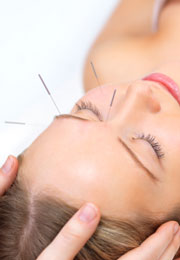New research shows that a combination of acupuncture and Chinese herbal medicine increases the recovery of stroke victims. The Sichuan Academy of TCM conducted research on 240 post-stroke patients with flaccid limb dysfunction in a single-blind, randomized, controlled study. The patients were separated into four groups. The first group received acupuncture, herbs and standard rehabilitative therapy. The second group received only acupuncture. The third group received only Chinese herbal medicine therapy. The fourth group received standard rehabilitative therapy but neither acupuncture nor herbal medicine.
 Acupuncture TreatmentThe results demonstrated that acupuncture and herbal medicine are safe and effective. More importantly, the researchers discovered that the combination of acupuncture, herbs and standard physical rehabilitative therapy is significantly more effective for the treatment of post-stroke flaccid limb dysfunction than using only standard physical rehabilitative therapy as a standalone approach to care.
Acupuncture TreatmentThe results demonstrated that acupuncture and herbal medicine are safe and effective. More importantly, the researchers discovered that the combination of acupuncture, herbs and standard physical rehabilitative therapy is significantly more effective for the treatment of post-stroke flaccid limb dysfunction than using only standard physical rehabilitative therapy as a standalone approach to care.
This research is in concordance with many other studies to have been published within the last year. Another recent study finds that acupuncture is effective for the treatment of shoulder pain following a stroke. In a review of 453 randomized controlled studies, researchers discovered consistent and clinically significant evidence that “acupuncture is an effective treatment for shoulder pain after (a) stroke.”
References:
Zhou, J. W., et al. "[Post-stroke flaccid limb dysfunction treated with the comprehensive therapy of acupuncture, Chinese herbal medicine and rehabilitation: muti-center randomized controlled trial]." Zhongguo zhen jiu, Chinese acupuncture & moxibustion 32.12 (2012): 1057.
Jung Ah Lee, Si-Woon Park, Pil Woo Hwang, Sung Min Lim, Sejeong Kook, Kyung In Choi, and Kyoung Sook Kang. The Journal of Alternative and Complementary Medicine. September 2012, 18(9): 818-823. doi:10.1089/acm.2011.0457.

